
Mô hình và Ký hiệu Quy trình Kinh doanhđã trở thành tiêu chuẩn thực tế cho các sơ đồ quy trình kinh doanh. Nó được thiết kế để được sử dụng trực tiếp bởi các bên liên quan thiết kế, quản lý và thực hiện quy trình kinh doanh, nhưng đồng thời cũng đủ chính xác để cho phép các sơ đồ BPMN được chuyển đổi thành các thành phần quy trình phần mềm.
Mục tiêu của BPMN
Các tổ chức luôn tìm kiếm những cải tiến trong cách họ làm việc nhằm tăng cường hiệu quả và giảm thiểu sai sót. Điều này đòi hỏi phải phân tích và cải tiến liên tục các phương pháp làm việc của họ, có thể bao gồm các quy trình làm việc rất có cấu trúc trong các tình huống có thể dự đoán, cũng như các giao thức để phản ứng với các tình huống động mà không thể quy định một quy trình cố định.
Mục tiêu chính củaBPMNlà cung cấp một ký hiệu dễ hiểu cho tất cả người dùng kinh doanh, từ các nhà phân tích kinh doanh tạo ra các bản nháp ban đầu của quy trình, đến các nhà phát triển kỹ thuật chịu trách nhiệm triển khai công nghệ sẽ thực hiện các quy trình đó, và cuối cùng, đến những người kinh doanh sẽ quản lý và giám sát các quy trình đó. Do đó,
BPMN tạo ra một cầu nối tiêu chuẩn hóa cho khoảng cách giữa thiết kế quy trình kinh doanh và triển khai quy trình. Một mục tiêu khác, nhưng không kém phần quan trọng, là đảm bảo rằng các ngôn ngữ XML® được thiết kế cho việc thực hiện các quy trình kinh doanh, chẳng hạn như WSBPEL (Ngôn ngữ Thực thi Quy trình Kinh doanh Dịch vụ Web), có thể được hình dung bằng một ký hiệu hướng đến kinh doanh.
Lợi ích của Ký hiệu Quản lý Quy trình Kinh doanh (BPMN)
Tiêu chuẩn — BPMN không thuộc sở hữu của một doanh nghiệp nào mà thuộc về một tổ chức (OMG), tổ chức đã được thiết lập thông qua các tiêu chuẩn toàn cầu khác, ví dụ, UML. Tiêu chuẩn này được hỗ trợ bởi nhiều sản phẩm phần mềm; bạn ít phụ thuộc vào sản phẩm của bất kỳ nhà cung cấp cụ thể nào.
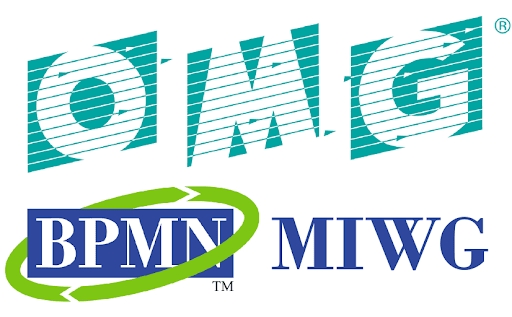
Sự đơn giản — BPMN có một ký hiệu giống như sơ đồ luồng dễ sử dụng, độc lập với bất kỳ môi trường triển khai cụ thể nào. Nguyên tắc đằng sau BPMN khá đơn giản, đó là lý do tại sao bạn có thể bắt đầu làm việc với ký hiệu này rất nhanh chóng.

Sức mạnh của biểu đạt — Nếu cần thiết, bạn có thể mô tả chính xác cách một quy trình hoạt động với BPMN. Tuy nhiên, điều này khó hơn so với việc chỉ mô tả sơ lược quy trình. Cách mô hình hóa chính xác này là khả thi, nhưng không bắt buộc.
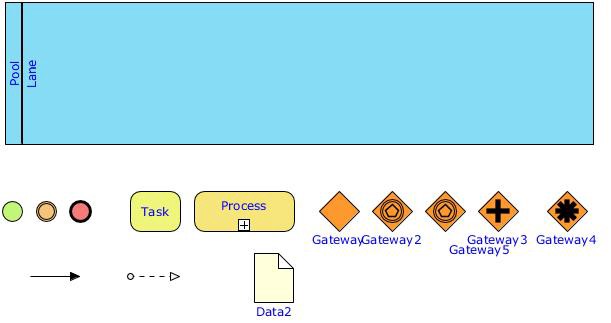
Triển khai trong CNTT — BPMN chủ yếu được phát triển để hỗ trợ việc triển khai kỹ thuật các quy trình (“Tự động hóa Quy trình”). CNTT càng quan trọng trong một công ty, việc sử dụng BPMN càng trở nên hữu ích.
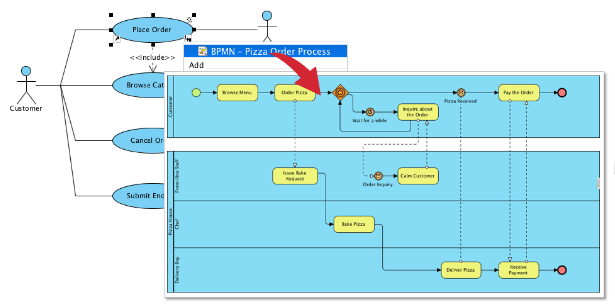
Các lợi ích khác:
- Đạt được thỏa thuận nhanh hơn về các quy trình hiện tại và quy trình tương lai thông qua các mô hình không mơ hồ;
- Khuyến khích sự tham gia của các bên liên quan thông qua các ký hiệu biểu đạt đồ họa;
- Tạo điều kiện cho việc phân tích và cải tiến hoạt động; và
- Tạo một thư viện các quy trình, định nghĩa trường hợp và quy tắc kinh doanh để đào tạo nhân viên mới
Phần mềm BPMN Trực tuyến Miễn phí
Có nhiều công cụ BPMN trực tuyến trên thị trường. Visual Paradigm là một trong những phần mềm miễn phí tốt nhất có sẵn cùng với nhiều ví dụ. Bạn có thể thử các ví dụ sau để tìm hiểu thêm về công cụ này. Nó miễn phí và tôi nghĩ là tốt nhất cho việc sử dụng cá nhân và bạn có thể sử dụng nó cho mục đích thương mại chỉ với 4 đô la / mỗi tháng. (Nhấp vào liên kết bên dưới để chỉnh sửa trực tuyến ngay lập tức!)
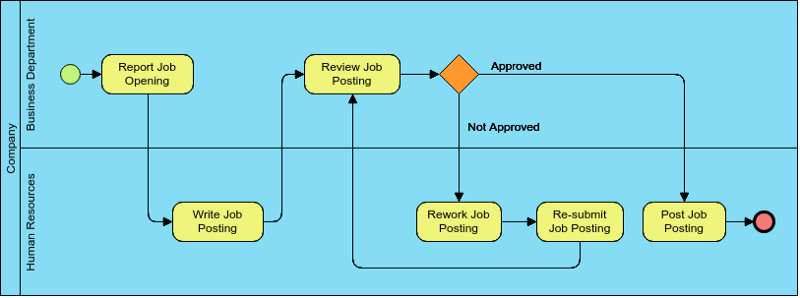

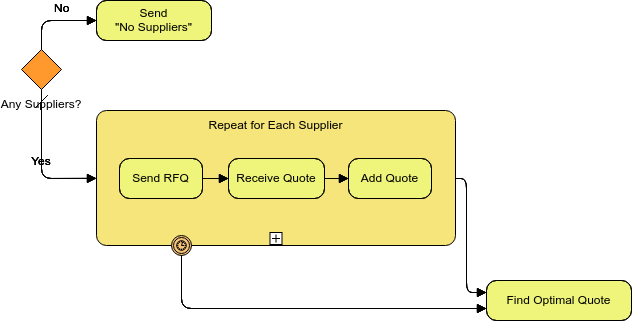
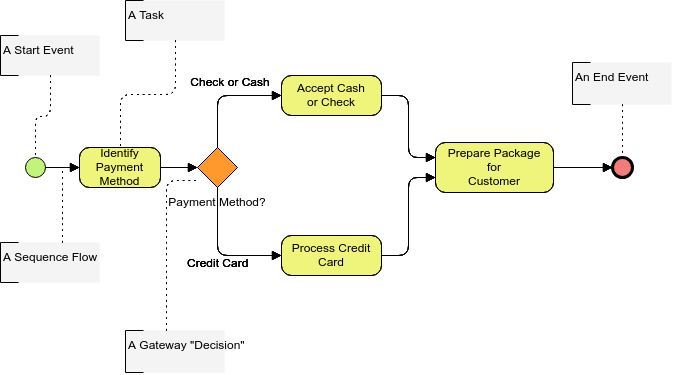
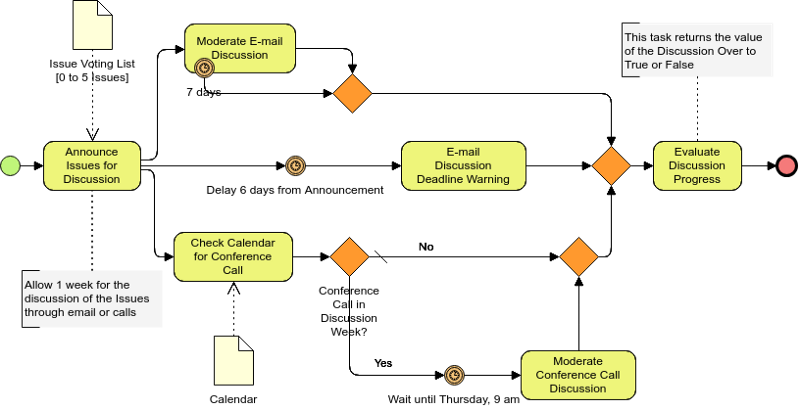
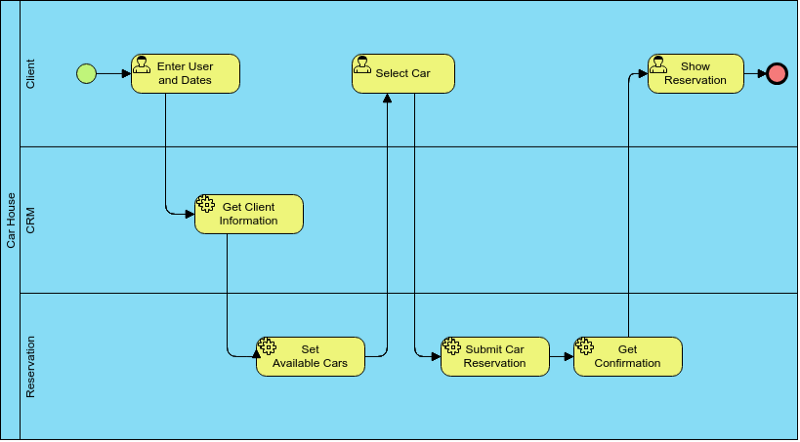
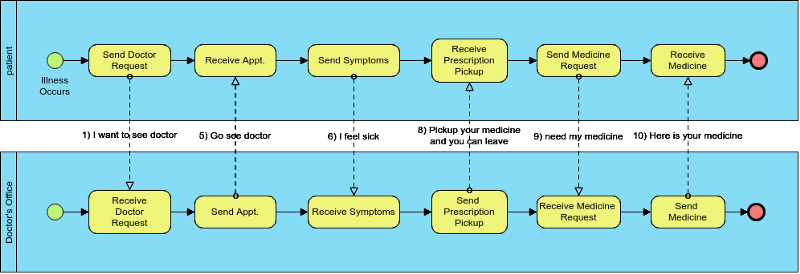

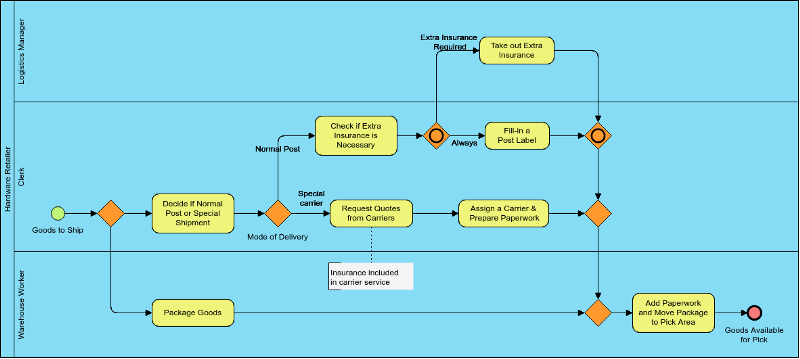
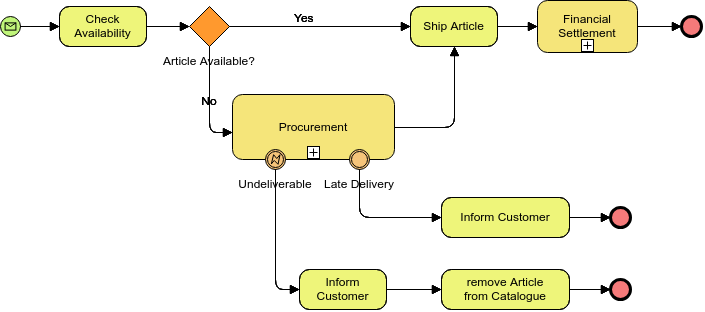
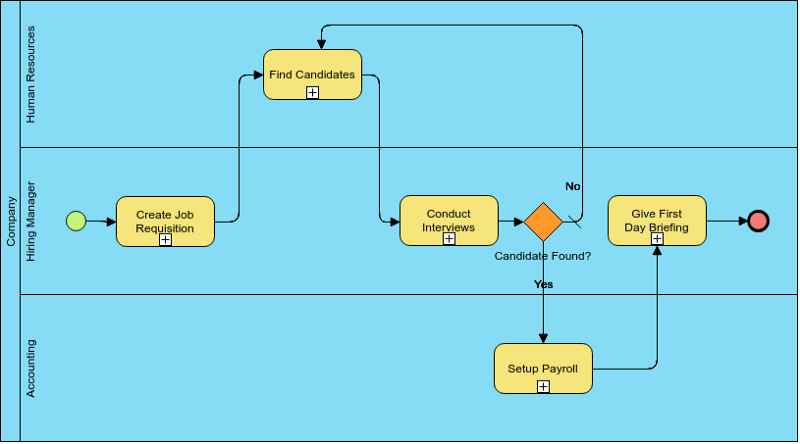
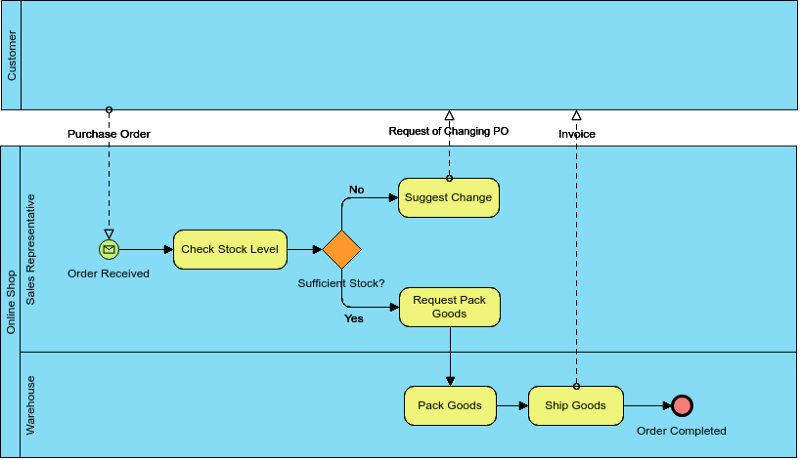
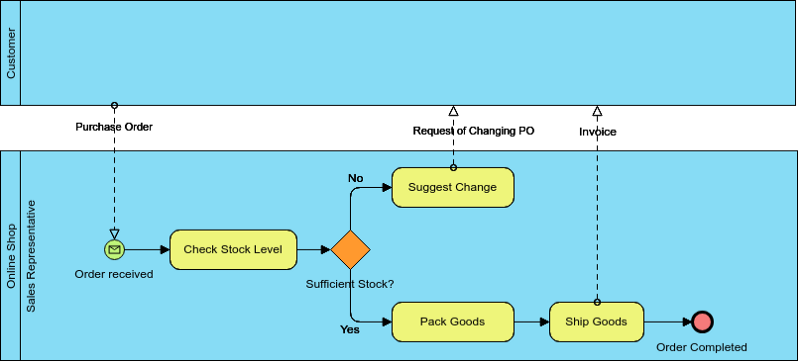
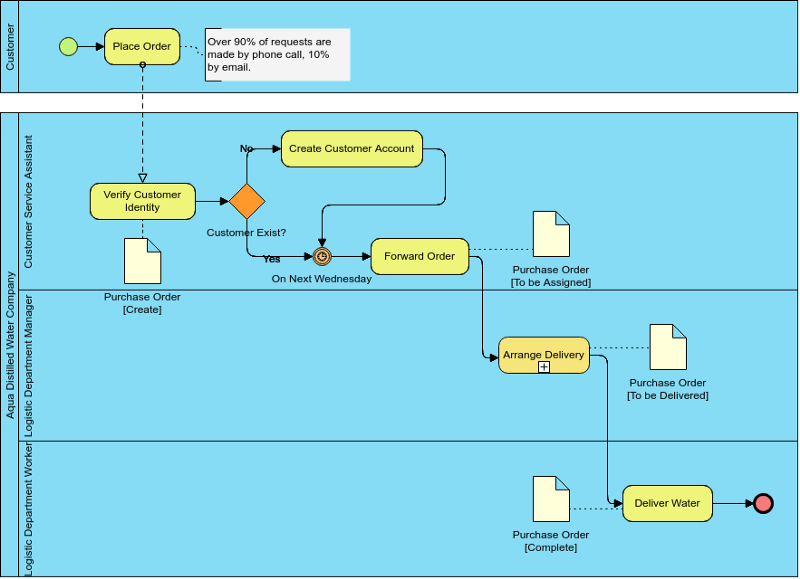
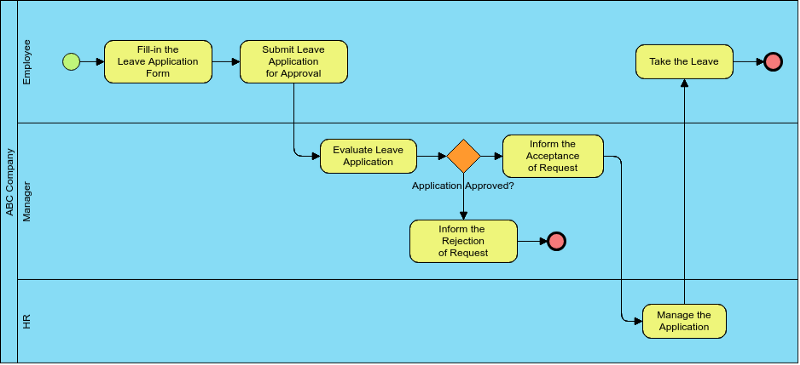
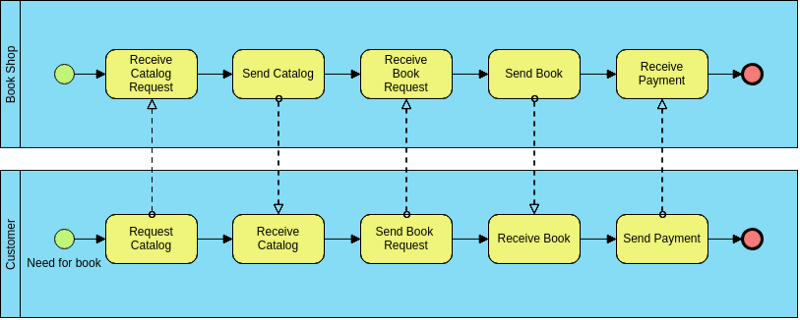
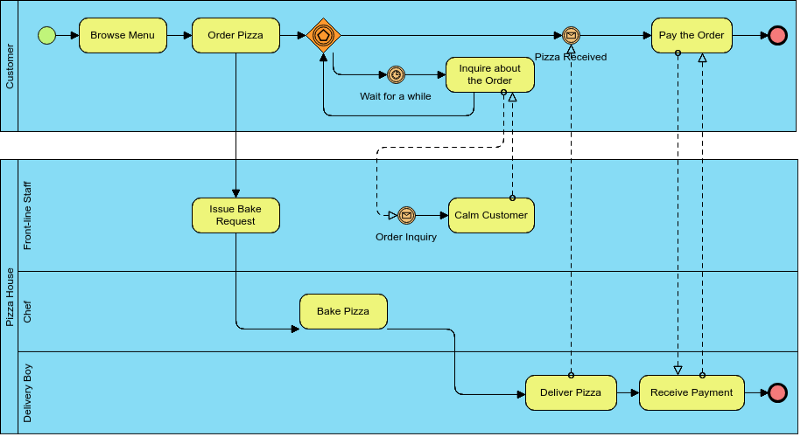
Tài liệu tham khảo BPMN
- Thông số Kỹ thuật Mô hình Quy trình Kinh doanh
- BPMN là gì?
- BPMN Điều phối so với Biên đạo so với Hợp tác
- Giải thích Các loại Hoạt động BPMN
- Các loại quy trình con trong BPMN
- Cách phân chia và quản lý một sơ đồ BPMN lớn?
- Học về các sự kiện BPMN
- Các loại cổng trong BPMN
- Mô hình hóa quy trình kinh doanh và phân tích khoảng cách
- Cách thực hiện phân tích khoảng cách với BPMN
- Tổng quan về ký hiệu BPMN
- Cách sử dụng đối tượng dữ liệu trong BPMN
- BPMN phiên bản 2.0
- BPMN 2.0 qua ví dụ: tài liệu OMG không quy định với các ví dụ về BPMN 2.0
- Hướng dẫn nhanh BPMN
This post is also available in Deutsch, English, Español, فارسی, Français, Bahasa Indonesia, 日本語, Polski, Portuguese, Ру́сский, 简体中文 and 繁體中文.













